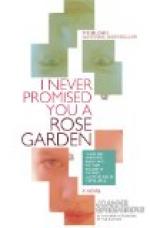THE WAYS OF THE WIND
“Out of the veins of the world comes
the blood of me;
The heart that beats in my side is the
heart of the sea;
The hills have known me of old, and they
do not forget;
Long ago was I friends with the wind;
I am friends with it yet.”
—GeraldGould.
Whenever a piece of the land is to be set apart for a garden, two mighty rulers must be consulted as to the boundaries. When this earth child is born and flower garnished for the christening, the same two must be also bidden as sponsors. These rulers are the Sun and the Wind. The sun, if the matter in hand is once fairly spread before him and put in his charge, is a faithful guardian, meeting frankness frankly and sending his penetrating and vitalizing messengers through well-nigh inviolable shade. But of the wind, who shall answer for it or trust it? Do we really ever learn all of its vagaries and impossible possibilities?
If frankness best suits the sun, diplomacy must be our shield of defence windward, for the wind is not one but a composite of many moods, and to lure one on, and skilfully but not insultingly bar out another, is our portion. To shut out the wind of summer, the bearer of vitality, the uplifter of stifling vapours, the disperser of moulds, would indeed be an error; therefore, the great art of the planters of a garden is to learn the ways of the wind and to make friends with it. If the soil is sodden and sour, it may be drained and sweetened; if it is poor, it may be nourished; but when all this is done, if the garden lies where the winds of winter and spring in passing swiftly to and fro whet their steel-edged tempers upon it, what avails?
What does it matter if violet or pansy frames are set in a sunny nook, if it be one of the wind’s winter playgrounds, where he drifts the snow deep for his pastime, so that after each storm of snow or sleet a serious bit of engineering must be undergone before the sashes can be lifted and the plants saved from dampness; or if the daffodils and tulips lie well bedded all the winter through, if, when the sun has called them forth, the winds of March blight their sap-tender foliage? Yet the lands that send the north winds also send us the means to deter them—the cold-loving evergreens, low growing, high growing, medium, woven dense in warp and woof, to be windbreaks, also the shrubs of tough, twisted fibre and stubborn thorns lying close to the earth for windbuffers.
Therefore, before the planting of rose or hardy herbs, bulbs or tenderer flowers, go out, compass in hand, face the four quarters of heaven, and, considering well, set your windbreaks of sweeping hemlocks, pines, spruces, not in fortress-like walls barring all the horizon, but in alternate groups that flank, without appearing to do so heavily, the north and northwest. Even a barberry hedge on two sides of a garden, wedge point to north, like the wild-goose squadrons of springtime, will make that spot an oasis in the winter valley of death.




